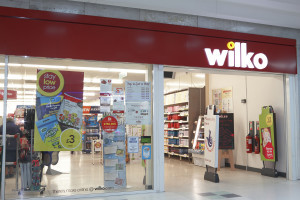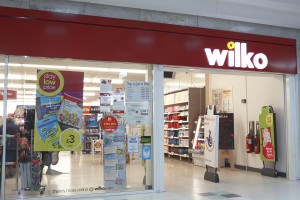Wilko’s packaging, labelling and destination sortation has been automated in a £3.5 million project at the Ollerton e-fulfilment centre.
The 110,000 sq ft facility is managed by Clipper Logistics and the project, carried out by AMH Material Handling, automates the operation for 85 per cent of online orders for home and store delivery.
AMH has installed the automated system over three floors at Ollerton. A carton erecting machine has been installed on each of the two mezzanine floors along with licence plate number labelling machines. The first floor handles small and medium sized cartons and the second floor is for large and extra-large cartons. Once erected, the labelling machine applies a unique LPN to each carton so that it can be correctly tracked and routed throughout the system.
 Completed orders on the mezzanine floors are placed onto a conveyor in-feed which merges them onto a powered spiral conveyor. The spiral conveyor transports cartons down to the ground floor where they join the main conveyor system. AMH also installed a multi-level goods lift so that trollies carrying orders requiring picks from more than one floor could be easily moved between the three levels.
Completed orders on the mezzanine floors are placed onto a conveyor in-feed which merges them onto a powered spiral conveyor. The spiral conveyor transports cartons down to the ground floor where they join the main conveyor system. AMH also installed a multi-level goods lift so that trollies carrying orders requiring picks from more than one floor could be easily moved between the three levels.
Once on the main system, cartons travel down a decline conveyor where they merge with any cartons inducted from the ground floor in-feed. Cartons continue to travel down the line and turn a 180 degree bend before being checked automatically for their expected weight. The warehouse control system validates the actual completed order weight against the system’s expected weight and any cartons with weight issues are diverted to a reject spur for rectifying.
Further down the conveyor line, the warehouse management system (WMS) alerts the conveyor if a carton contains any fragile items. If so, the system diverts the carton to the fragile repack work benches. Here, colleagues suitably repack any fragile items before placing the carton back onto the main conveyor system.
After items have passed both the weight and fragile repack stations, one of three document inserting machines place the customer’s shipping note into each carton. When the shipping notes have been placed into the cartons, they are then sorted by size before they reach either of the two carton lidding machines. The machine measures the height of the products and reduces the carton to a suitable height. Folding the carton to remove empty space and sealing it with glue increases the strength of the packaging. A lid is then automatically placed and sealed on top of the carton.
Once lidded, the cartons run through two labelling systems. The first label machine applies the shipping labels, with the destination address, to the top of the cartons. The second label machine applies a label to the side of each carton with both the customer’s name and the carton weight. This is important for store orders as it allows colleagues to easily identify customers’ parcels when they are stacked in store. As the labelled cartons continue to travel to the despatch area, they are scanned again to ensure that both the LPN and the shipping label match up correctly.
In the despatch area, AMH has installed a total of eight despatch lanes. The first four lanes are used for the parcel carrier companies. Here, AMH has installed four telescopic loading booms to transfer the parcels directly into the back of the trailers for rapid loading. Three of the remaining despatch lanes transport parcels for in-store collect orders while the eighth lane is a reject lane for any incorrect or unreadable parcels.
Colin Holland, project manager at Clipper, said: “The system that AMH has designed is capable of handling our forecasted peak throughput capacity up to 2020/21. In addition to this, the system is fully adaptable so if our volumes should change, we can add additional automation to accommodate an increase in order processing.”







